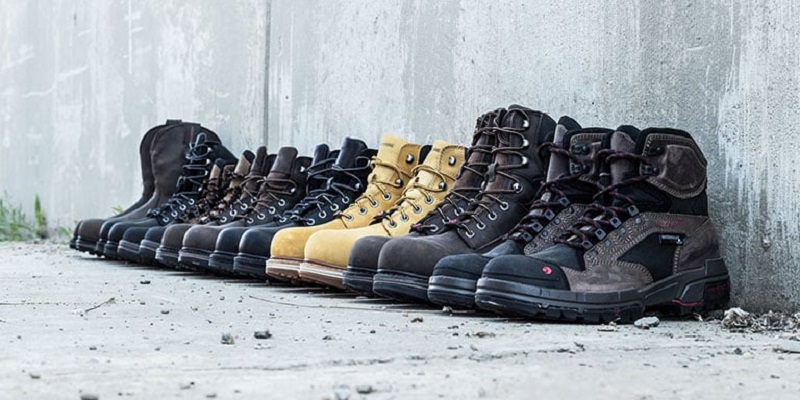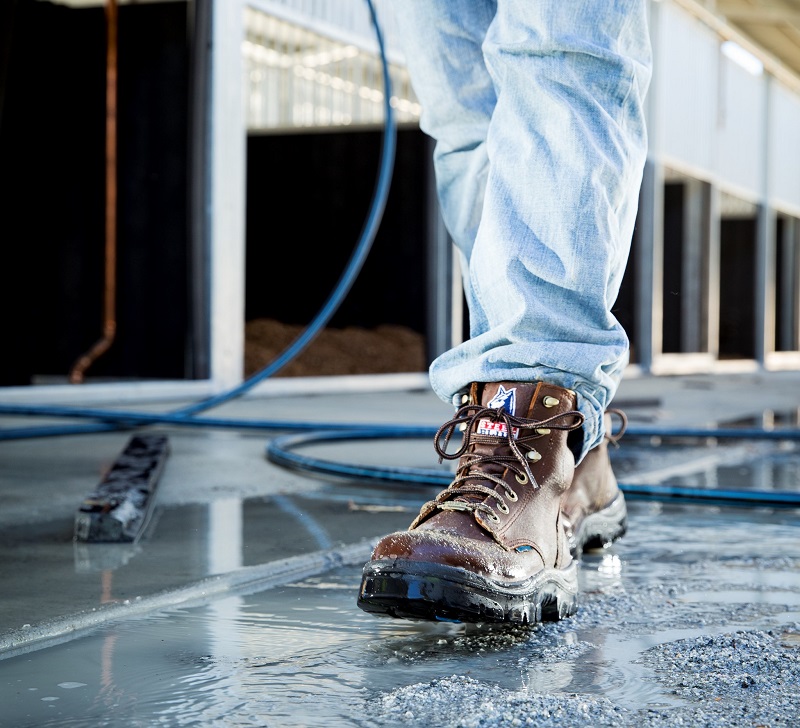Are you looking for high-quality safety work boots? This type of footwear has certain standards such as safety toes that should keep your toes protected from potential injuries. Besides that, they should be water-resistant, anti-slip and anti-fall. If you’re searching for such shoes, don’t forget to check Steel Blue Boots online. Steel Blue Boots designs shoes made to keep your feet comfortable and safe at all times.
Types of Work Boot Toes

There are different types of work boot toes including composite, steel, and soft toes.
- Composite toe work boots are a lighter alternative and are particularly suitable for working in extremely cold or hot climates. The material used in composite toes does not absorb cold or heat as steel toes do. These boots are typically made from materials such as plastic or carbon fibre, making them more comfortable to wear for extended periods on the work site or ranch. If you frequently deal with metal detectors in your daily work, composite toe work boots are a good choice.
- Steel-toe work boots offer the highest level of protection as they can withstand high impacts. However, they can be heavy and less breathable compared to other options. If you are looking for Steel Blue boots online, you’ll find a variety of steel toe boot models available, including those with laces, zippers, or slip-on designs. These boots are made from different materials and come in various colours, allowing you to match them with your work attire.
- If your job does not require safety regulations or ASTM certifications, soft-toe work boots are a suitable option. These boots provide lightweight protection and are ideal for working on the farm or completing projects at home.
Consider the Insoles
The insole plays a crucial role in work boots. Many of these boots come with their version of removable orthotic insoles, which are designed to provide microbial protection, moisture-wicking technology, heel support, and overall comfort for those who spend long hours on their feet. Additionally, you can opt for machine-washable boot insoles, allowing you to easily clean off any dirt and grime and prevent them from becoming too odorous.
Shaft
When it comes to work boots, the shaft height is another important factor to consider. The shaft refers to the upper part of the boot, measured from the top of the heel to the top of the boot. If you require ankle support for your job, it is recommended to choose a boot with a shaft height of at least 22cm.
Choose Anti-Slip and Anti-Fall
If you work in an area where the floors are slippery, be sure to invest in work shoes with soles designed to prevent slipping and falling. You’ll be able to move around with ease, as the shoes will provide a firm grip on the surface and ensure your stability. These types of shoes are particularly suitable for people working in construction sites, farms, factories, and similar environments.
Waterproof Boots Are a Must

When working outdoors, it’s essential to have shoes that can resist water. Dampness inside your boots can lead to unpleasant odours and create an environment for bacteria and fungi to thrive, which can negatively impact your health. To prevent this, it’s best to opt for waterproof work boots that will remain dry even during heavy rainfall. These boots are typically treated with PVC or rubber on the surface to prevent water from seeping in.
Fit
It’s crucial that your work boots fit properly. Considering the fact that you’ll be wearing them for about eight hours, even the slightest discomfort can pose a significant issue. It’s important to ensure that there’s no pressure on any part of your foot. Experiencing discomfort would not only hinder your focus but also potentially result in sores, ingrown toenails, blisters, and overall foot pain.
If your boots are too tight, you’ll struggle to walk comfortably and perform your job effectively. On the other hand, if they are too loose, you run the risk of tripping, falling, losing your shoe while working, and experiencing discomfort. Opting for cheap models won’t save you money in the long run. In reality, it’ll probably cost you more as you’ll likely have to buy a new pair soon and deal with foot-related issues.
It’s Best to Try The Shoes On
When you go shopping at a physical store, it’s important to wear appropriate socks. Put on the socks and try on the boots you are considering to see how they fit. If the boots feel tight even with a pair of high-quality and warm socks, they aren’t a good choice. Remember to try on both boots. It’s impossible to determine if the boots fit you well if you have one foot in your old shoes. Walk around the store and see how they feel and fit on your feet. In addition to walking, try hopping, sitting, standing, and even running a little. This is a good way to test the boots. If they feel comfortable during these activities, then they are worth your investment.
Be sure that your heel doesn’t slip out of the boot or rub against the back part. The toes should be approximately 2.5cm away from the front part of the shoe. If there isn’t enough space between the front part of the shoe and your toes, you run the risk of experiencing painful pressure in this area while walking. Also, you shouldn’t feel any pain or pressure on the sides of your feet.
